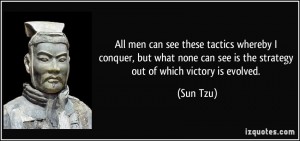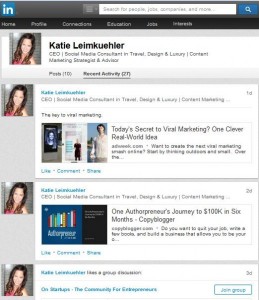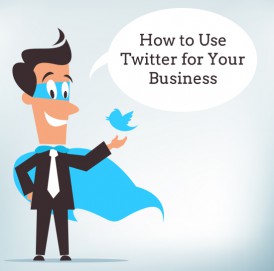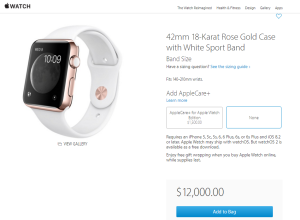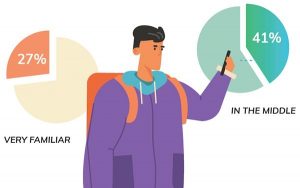
Shopping 21st Century Style
In the good old days a website was not a ‘must have’ for business. The print yellow pages and traditional advertising was where it was at!
People rarely went online to find out about your business, products and services and those of your competitors – because most businesses weren’t online. (Some still aren’t!)
When we wanted to find out about a product or service, we looked in the yellow pages and then we either made phone calls to find out more or we visited businesses/stores in-person. Sure, we talked to friends and family when it came to major purchases, but the process of making a decision was much more laborious than it is now.
Fast-forward to 2015!
“The more shoppers we canvass in country after country—and the more thoroughly we poll them about their consumer habits, preferences, and expectations for a better shopping experience—the more obvious it is that consumers are developing their own approach to researching and purchasing, both online and in-store. They want their shopping needs met in a way that minimizes uncertainty and inflexibility and maximizes efficiency, convenience, and pleasure.”
– PWC report Total Retail 2015: Retailers and the Age of Disruption

“The mobile phone is rapidly becoming a crucial shopping agent as shoppers demand more personalization.” – PWC report Total Retail 2015: Retailers and the Age of Disruption
Shopping 21st Century Style
Today, from the comfort of our own home, or on our mobile device while standing in a store, we expect to be able to find pretty much any information we need online, without speaking to a salesperson.
Today, most consumers go online first to find out more about our business, our products and our services.
Today, consumers visit our website because:
- someone suggested or recommended us, our business, our product and/or our service to them
- they’ve driven by our business/store/restaurant a gazillion times and think we may have something they want or need
- they’ve received one of our professional looking print advertising pieces or our business card and they want to know more
- they’ve seen our cute bus bench or billboard signage showcasing our business name and thought of us when a particular need came up
- they’ve visited our Facebook page, our LinkedIn profile or another social network we’re active on and are interested in what we have to offer
- they’re shopping in our store and want to learn more about a particular product or service, our online reviews or what competitors are offering
- they’ve used a search engine and our name has appeared in the results, and they click on a link to find out more about us
Are They Visiting Your Website First?
Chances are, when someone recommends us or mentions our name, or when someone is interested in finding out more about us, the first thing they’ll do is head over to our website to find out more.
They’ll visit our website …
- before they give us a call
- before they visit our store
- before they send us an email
In fact, when they visit our website, and if it’s an option and makes sense, (more and more) they may simply purchase what they’re looking for from us online, without ever having contacted us direct.
But, whether they’re browsing in-store, from their place of work or from home, chances are consumers are visiting our website to check out our business, our products and services. And, what they find when they first arrive there, and then as they dig deeper, matters. It matters a lot!
Potential customers may first visit our website while on on their pc, their tablet, phablet or smartphone from any number of places. The point here is that different people will use different devices, and our website needs to be easy to navigate, easy to read and present a good first and ongoing impression, regardless of the device it is being viewed on!
The importance of mobile is not how many transactions are completed on a mobile phone. The importance is how the consumer is interacting, making decisions, checking information, checking stock, finding your stores, communicating with you through the smart phone. That’s what’s different.”
– Matt Hyde, CEO of West Marine, a major California-based retailer of boat supplies Source: PwC
Your Website: Consumer Trusted Advertising?
In a 2013 Nielsen report on trust in advertising, 69% of consumers surveyed (globally) identified branded websites as the #2 (out of 19 choices) most trusted advertising source.
Think about that! The resource that you own and have complete say over, in terms of what it says and how it looks, feels and functions is the 2nd most trusted advertising source in the eyes of consumers!
The #1 choice for trust in advertising, not surprisingly, is recommendations from people we know (word-of-mouth). In the 2013 report, opinions posted online came in just behind branded websites at 68%, as the #3 most trusted source of advertising. For the full list and rankings click here.
Unfortunately, the value of a business website is often not reflected in many (dare I say ‘most’) business websites!
There’s Still Time To Get It Together!
For most small business owners, affordable website options are within reach. 15 years ago a website that may have cost $ 10,000+ to build, might cost $ 2,000+/- today, depending on the needs of your business. Some micro and small business owners may even find that a 1 to 3 page website at a cost of $ 1,000+/- will do the trick, and allow them to get started on the right foot.
The options for building a solid, affordable, responsive website that represents your business well and that can be updated in-house, with some training, are almost unlimited today! WordPress is my favourite for a number of reasons, but there are other options too.
Today, there is really no excuse for not having at least a basic website that is fresh, not dated, works on devices of all sizes and that presents a positive and accurate impression of your business.
Although the first impression of your website is extremely important, the value of your site goes way beyond the first impression! The first impression determines whether visitors stay on your website and dig further, or leave within seconds.
Your website needs to be more than just a pretty face – or a fancy WordPress or other theme. If you give a good first impression with great images but don’t deliver on the content, visitors won’t find what they are looking for or have a reason to return in the future. A beautiful website without substance is similar to a beautiful or handsome person without substance. All outside appearance and nothing deeper.
Today, your small business website needs to be . . .
- branded (colours, fonts, logos, taglines etc. that ensure your website look is consistent with your overall branding)
- responsive, or at least mobile friendly (easy to read and navigate on any pc, tablet, mobile device)
- intuitive/easy to navigate (not cluttered and confusing – a front door to your site that provides clear and easy to locate options for consumers to find what they’re looking for)
- pleasing to the eye and suitable for your type of clientele (high quality images and graphics – well chosen free or paid stock photos can work – custom quality photos may be needed, depending on your type of business/products/services; content that is well laid out and uses white space; text that is sized appropriately and easy to read)
- helpful, interesting, informative for your target audience (providing content/information they are looking for – this includes your contact information – your phone number at the top of your site? – your address and a map showing your location?)
Of course, there are other pieces that need to be considered to …
- calls-to-action (for email subscriptions, newsletters, special offers, etc.)
- links to your social networks (so visitors can find you and connect with you on social networks)
- social sharing options (so visitors can share interesting content with others)
Each business is somewhat different and a helpful starting point may be to see what your competition is doing. You can learn valuable insights from checking out the competition and other businesses: what you like and what you don’t like, new ideas, bad ideas, etc.
Where To Invest: Your Website Or Social Media?
Unfortunately, the answer is not as simple as the question. Undisputedly, your website will serve you best as the focal point on your online presence. There are a number of reasons for this but here is the most important:
You own and control your website. You don’t own or control social media!
(Reaching Facebook page fans in their newsfeed is a good example of how the rules can change for business midway through the game.)
People don’t expect to know everything there is about your business, your products and services by going to your social networks. They DO expect to get a sense of who you really are from your social networks, including:
- Are you helpful?
- Is the information you provide on social networks interesting?
- Do your brand interactions show that you care about your customers?
- What do those who have dealt with you have to say about you?
Today, both a website and social media are important for most businesses. Just as other forms of marketing, including traditional media, may also be important pieces of your marketing strategy. But your website, as an asset you own and control, should be at the hub of your online presence.
The Trusted Advertising Source You Own
When it comes down to discovering what you have to say about yourself and what you have to offer, your website is the place most people go. And, as a bonus, most consumers, 69% according to Nielsen, trust the information we provide on our website. This means, we have to deliver on our promises if we hope this to have a positive impact/ripple effect on our business, rather than a negative one.
(268)


